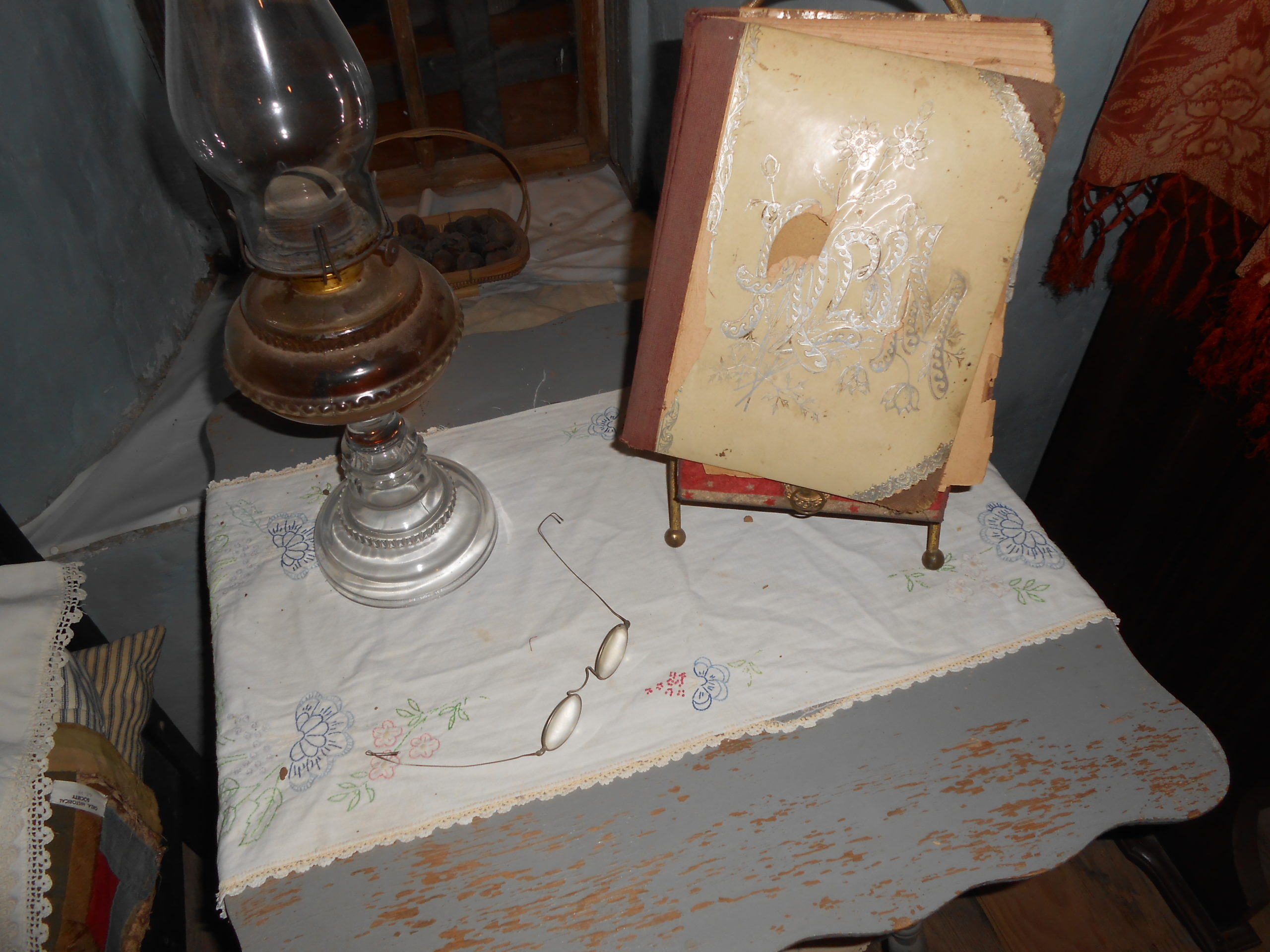
FREE Short Story: The Seamstress
For your FREE short story, type your email address below.
You'll get the short story, plus fun facts about the Wild West, and news about upcoming stories.

For your FREE short story, type your email address below.
You'll get the short story, plus fun facts about the Wild West, and news about upcoming stories.
A while ago I wrote about the 1895 Montgomery Ward catalogue and the revolution of mail order in the late 19th century America. But apart from household goods, clothes, furniture, tools, and farm equipment, it also featured thirty-eight pages of books, listing thousands of titles, in print so small I had to get out my magnifying glass (ok, my 21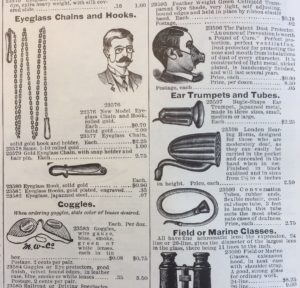 st century version: enlarging a photo of the page. BTW they did have magnifying glasses in the catalogue, p. 205, in between the eyeglass chains and ear trumpets, $1.12 each).
st century version: enlarging a photo of the page. BTW they did have magnifying glasses in the catalogue, p. 205, in between the eyeglass chains and ear trumpets, $1.12 each).
So what was on offer in 1895 for homesteaders on the prairie, where the nearest bookstore or library might have been several days away?
The catalogue starts with a practical selection of copy books, bookkeeping blanks, and hotel registers, cloth bound with ‘genuine Russia backs.’ Then there are maps, dictionaries, and whole sets of encyclopaedias. An entire set of Chambers’ Encyclopaedias, ten volumes, Red and Gold edition, with 27,000 specially prepared articles ‘giving pointed, practical, explicit and most interesting instructive information,’ sold for $6.50 (retail price $10.00). 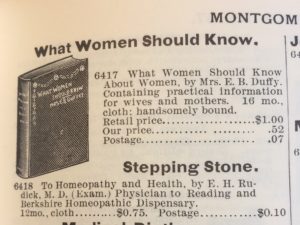 Then there are reference books on Roberts’ Rules of Order, Good Manners, Law at a Glance, Pen Flourising and Letter Writing, What Women Should Know (‘containing practical knowledge for wives and mothers’ – definitely need a copy!), Grays’ Anatomy, and a German-American Cookbook.
Then there are reference books on Roberts’ Rules of Order, Good Manners, Law at a Glance, Pen Flourising and Letter Writing, What Women Should Know (‘containing practical knowledge for wives and mothers’ – definitely need a copy!), Grays’ Anatomy, and a German-American Cookbook.
For homesteaders, there are books on how to build and furnish log cabins, 250 illustrations of barns for construction, blacksmithing, horseshoeing, disease of livestock, horse management, the winter care of cattle, and a wonderful title: ‘How to Handle and Educate Vicious Horses,’ only 38 cents plus 4 cents postage – my order’s already in the post!
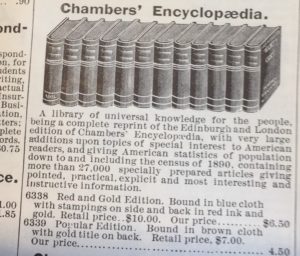 These titles make you realize that many Americans at that time were rural, and didn’t have easy access to professionals. They had to be very self-sufficient. If there was an emergency, they couldn’t just dial 911; they had to figure it out for themselves. Although the east coast had been connected up with the west coast by rail in 1869, finished on May 10, with the driving of the ‘last spike’ into the line at Promontory Point, Utah, most Americans living west of the Mississippi still had a long journey to their nearest train station. My great-grandparents, homesteading in western Oklahoma, would have had a two-day trip on bumpy roads in a horse-drawn cart to Enid if they wanted to ride the rails.
These titles make you realize that many Americans at that time were rural, and didn’t have easy access to professionals. They had to be very self-sufficient. If there was an emergency, they couldn’t just dial 911; they had to figure it out for themselves. Although the east coast had been connected up with the west coast by rail in 1869, finished on May 10, with the driving of the ‘last spike’ into the line at Promontory Point, Utah, most Americans living west of the Mississippi still had a long journey to their nearest train station. My great-grandparents, homesteading in western Oklahoma, would have had a two-day trip on bumpy roads in a horse-drawn cart to Enid if they wanted to ride the rails.
Of course, there were plenty of entrepreneurial folk who transported goods to the small towns far from rail lines, if you weren’t in a rush. The catalogue also offered a discount on bulk orders. They encouraged neighbors to club together and save postage costs. They even detailed a scheme for enterprising people to ‘make a profit’ by collecting orders around their district, applying for the discount, giving a small discount to their ‘clients’, and keeping the rest of the discount for themselves. They might have had ‘catalogue circles’ or ‘bargain bees’, kind of like a homemade version of Tupperware parties!
The fiction listings in the book section advertise collections of beautifully bound books, like the ‘Pansy Series’, ‘bound in English silk cloth with gold embossed title stamps,’ $0.98 each or 10 for $9.50. The Poets’ Presentation Edition contains works by Robert Browning, Lord Byron, Longfellow, Edgar Allen Poe, Sir Walter Scott, Lord Tennyson … all the greats. The readers of those days must have loved poetry; two full pages of the catalogue are devoted to this genre.
The Avon Series lists titles we all recognize: The Hunchback of Notre Dame, Uncle Tom’s Cabin, Gulliver’s Travels, Robinson Crusoe, The Count of Monte Cristo, Goethe’s Faust, Last of the Mohicans, and Pilgrim’s Progress. Were the readers on the Midwest prairies in those days so cultured? Well, another look reveals possibly lesser-known titles like Born Coquette by ‘The Duchess’, The Duke’s Secret, Knight Errant, Thelma, One Life One Love, Wooed and Married. They wouldn’t be out of place in a Mills & Boon collection!
Some of the most elaborately decorated books seem to be in the ‘Reward of Merit Gift Book’ section. These wonderful books are bound in leather, embossed with gold, and contain beautifully illustrated poems and other edifying readings. You can choose from the ‘Paths of Peace series’, the ‘Forget Me Not Series, or the ‘Rock of Ages Series,’ comprising ‘exquisite shapes and styles, colored illustrations and verse.’ Just what the child with the best Sunday School attendance would wish for.
And after the children’s section, with Aunt Louisa’s Big Picture Books, and the Cock Robin Series, are four pages of Bibles. The Superfine Family Edition, gilt edged, features Levant Moroccan leather, extra cushion bevel solid edges, red under gold round corners, and full-page illustrations of Bible scenes from steel line plates, selected from the greatest masterpieces of sacred art. It includes colored lithograph maps of the Holy Lands, a pronouncing dictionary, Bible commentary, forty photographs of Palestine, sixteen portraits of Founders of Religious Denominations, and a marriage certificate and family record page. Total price only $13.00 or $13.75 with an extra fine clasp.
There is a shocking reminder of America’s darker side in Bill Nye’s History of the United 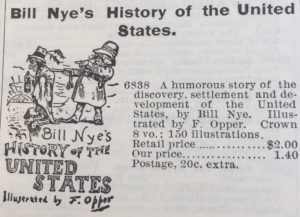 States, ‘a humorous story of the discovery, settlement and development of the United States.’ Bill Nye may be humorous, but next to this description is an illustration from the book, showing an imperious authority figure shoving a police baton into the back of a shabby, crouching Indian holding a bottle of liquor. The anthropomorphized sun, setting in the background, watches with a panic-stricken expression as the poor Indian is pushed off a cliff into the sea below.
States, ‘a humorous story of the discovery, settlement and development of the United States.’ Bill Nye may be humorous, but next to this description is an illustration from the book, showing an imperious authority figure shoving a police baton into the back of a shabby, crouching Indian holding a bottle of liquor. The anthropomorphized sun, setting in the background, watches with a panic-stricken expression as the poor Indian is pushed off a cliff into the sea below.
My personal favorite has to be ‘Ten Nights in a Bar Room and What I Saw There’ by T.S. Arthur. I’d definitely go for the fully illustrated large-type edition, only $0.45.
Those homesteaders were tough, and faced a lot of hardships. But it’s nice to know that at the end of an exhausting day of plowing, they could settle down in their sod houses, light the oil lamp, brew a cup of roasted barley coffee on their cow-chip-fired cast iron stove, and enjoy a few lines of Alfred, Lord Tennyson.
